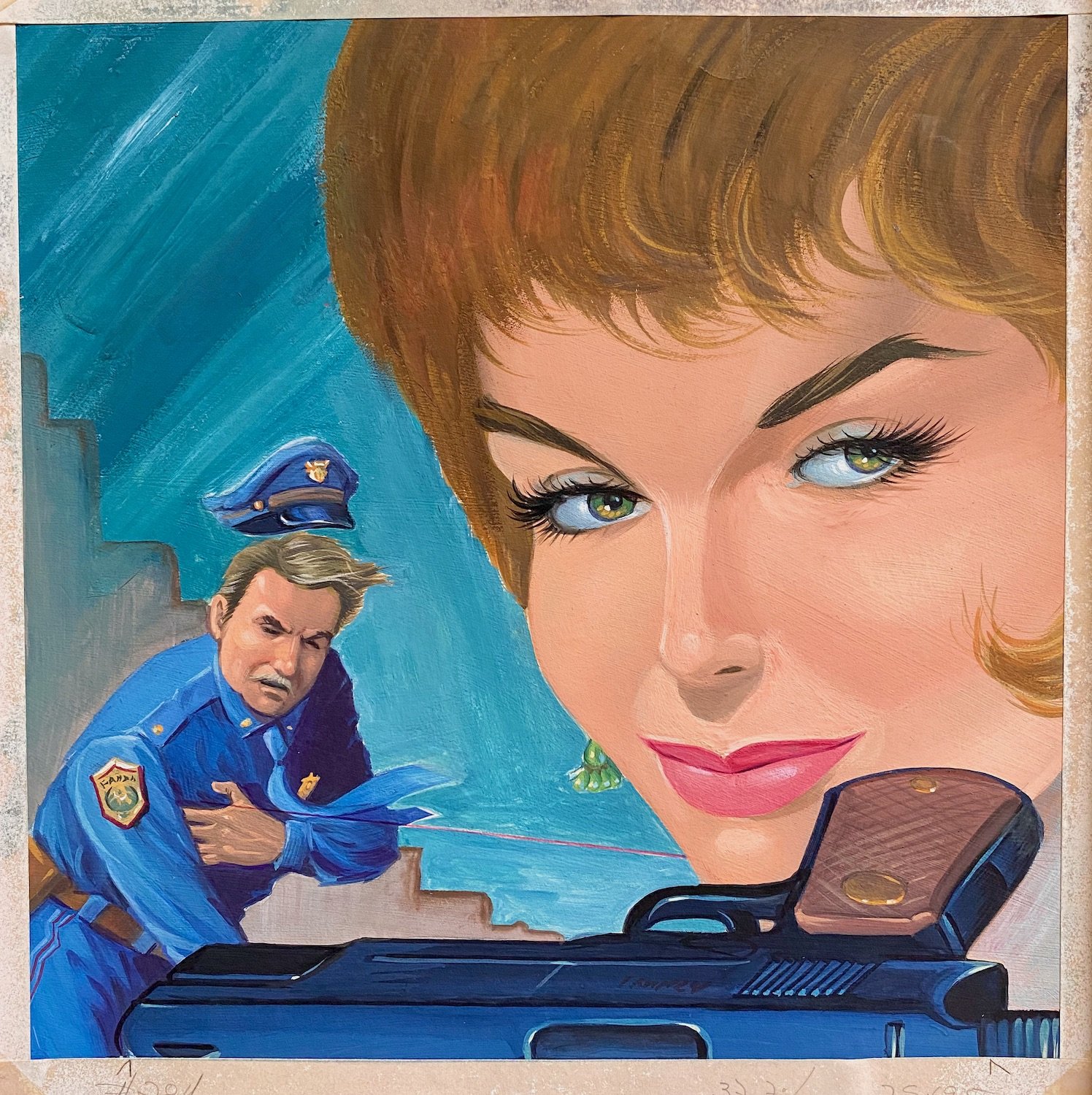"Disaster Girl" Mexican Pulp Art
Mexico has a rich tradition of street-level popular art, from the satirical woodcuts of Posada to modern-day graffiti artists. Among the most unique examples are Mexico’s pulp fiction illustrations, produced in huge volume from the 1960s through the 80’s. This cover art often featured outrageous, transgressive images of monsters, aliens, ghouls, and wild beasts menacing their attractive victims— images which may-or-may-not have related to the stories inside. The paintings (usually gouache, or tempera on board) were usually discarded, or painted over, by artists working for hire.
Those that survived have become highly collectible, as evidenced by a number of gallery shows in recent years, including “Pop Pulp!” at Firecat Projects in Chicago, and “Pulp Drunk: Mexican Pulp Art” at the Ricco/Maresca Gallery in New York. In his review of the “Pulp Drunk,” New York Times critic Ken Johnson wrote: “Unvarnished by society’s mainstream public morality, these images have a kind of authenticity resembling, in some ways, that of Outsider art. They expose the throbbing id of the collective unconscious, which is why artists like the Pop-surrealist Jim Shaw and the Pop-conceptualist Mike Kelley found so much inspiration in this sort of psychoanalytically combustible material.”
If this image seems familiar, it’s probably because it eerily prefigures one of the most famous photographs of the internet age: "Disaster Girl" (see second image). The photo of four-year-old Zoë Roth was taken by her father in 2005, as the family watched a structure fire in their North Carolina town. Roth's expression (described by The New York Times as "a devilish smirk" ) inspired thousands of memes on social media. Roth and her family finally saw some benefit from the image’s popularity when they sold a “non-fungible token” (NFT) of the photo in 2021, for $470,000.
Gouache on board, 10.25” x 10.25”. We do not know the artist’s name, but the illustration is for the pulp “Los Detectives No. 284”. Note that there is a quarter-inch strip of tape all around the perimeter of the image; this was the “bleed line” marked out during reproduction.

